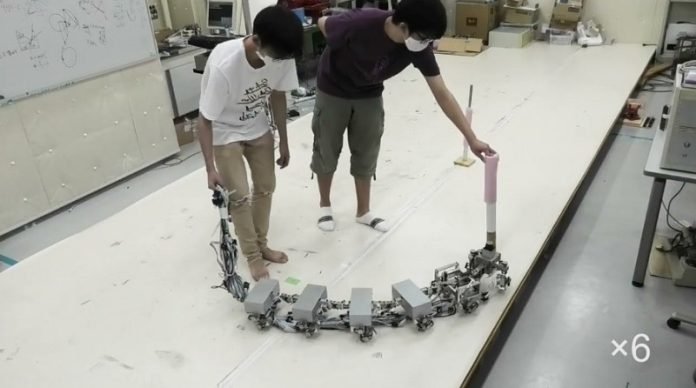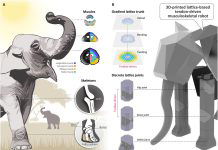
Researchers from Osaka University have developed an exciting new type of walking robot that mimics the mobility of animals.
Unlike previous legged robots, this invention takes advantage of natural instability to navigate uneven terrain with ease.
By adjusting the flexibility of its joints, the robot can change its walking pattern without the need for complex control systems.
This breakthrough could pave the way for the creation of robust rescue robots capable of exploring challenging environments.
While animals have evolved highly efficient legged locomotion systems, engineers have struggled to replicate this success in robots.
Legged robots often encounter fragility issues, with repeated stress causing leg failures that severely limit their functionality. Additionally, controlling numerous joints to navigate complex environments requires significant computational power.
Improving these aspects is crucial for developing autonomous or semi-autonomous exploration and rescue robots.
Researchers at Osaka University have designed a biomimetic “myriapod” robot, consisting of six segments with two legs connected to each segment, along with flexible joints.
By adjusting the flexibility of these joints using a motor-controlled screw, the robot can exploit natural instability and transition from straight walking to curved motion. This enables efficient maneuverability, even in challenging terrains.
The scientists found that by increasing the flexibility of the joints, the robot experiences a phenomenon called “pitchfork bifurcation.”
In this state, straight walking becomes unstable, and the robot naturally starts walking in a curved pattern either to the right or to the left. While instabilities are typically avoided in robot design, deliberately using them in a controlled manner enhances the robot’s ability to navigate its surroundings.
The researchers drew inspiration from agile insects that can dynamically control their instability to achieve rapid movement changes.
By focusing on controlling flexibility rather than directly steering the body axis, this approach significantly reduces computational complexity and energy requirements.
In tests, the myriapod robot successfully navigated specific locations by following curved paths toward its targets.
This technology holds promising applications in search and rescue missions, hazardous environment operations, and even planetary exploration.
The myriapod robot developed by the Osaka University team represents an exciting step toward building more efficient and robust-legged robots.
Future versions may include additional segments and control mechanisms, further enhancing the robot’s capabilities.
As researchers continue to draw inspiration from nature, we can anticipate remarkable advancements in the field of robotics that will contribute to safer and more effective exploration and rescue missions.



